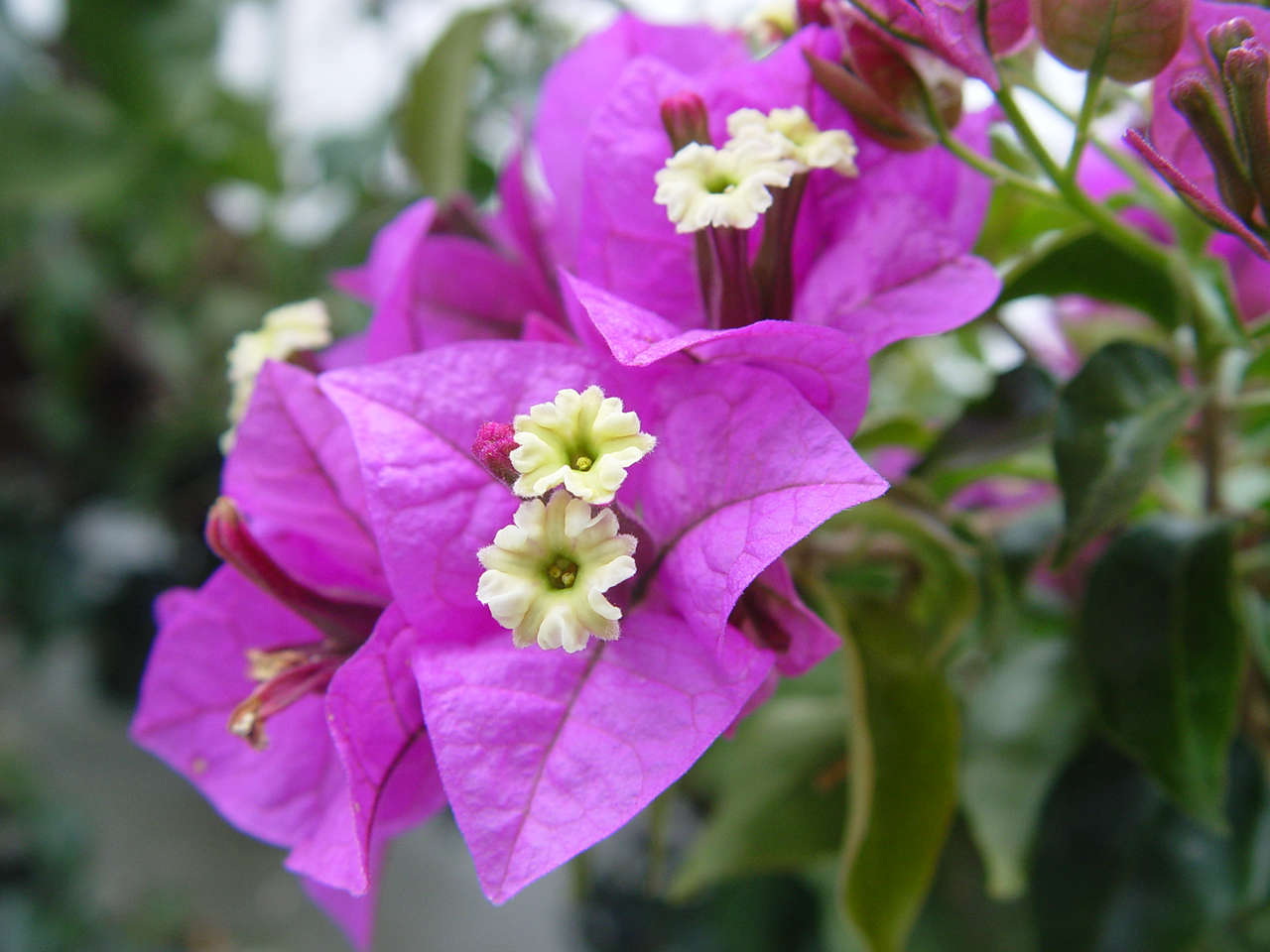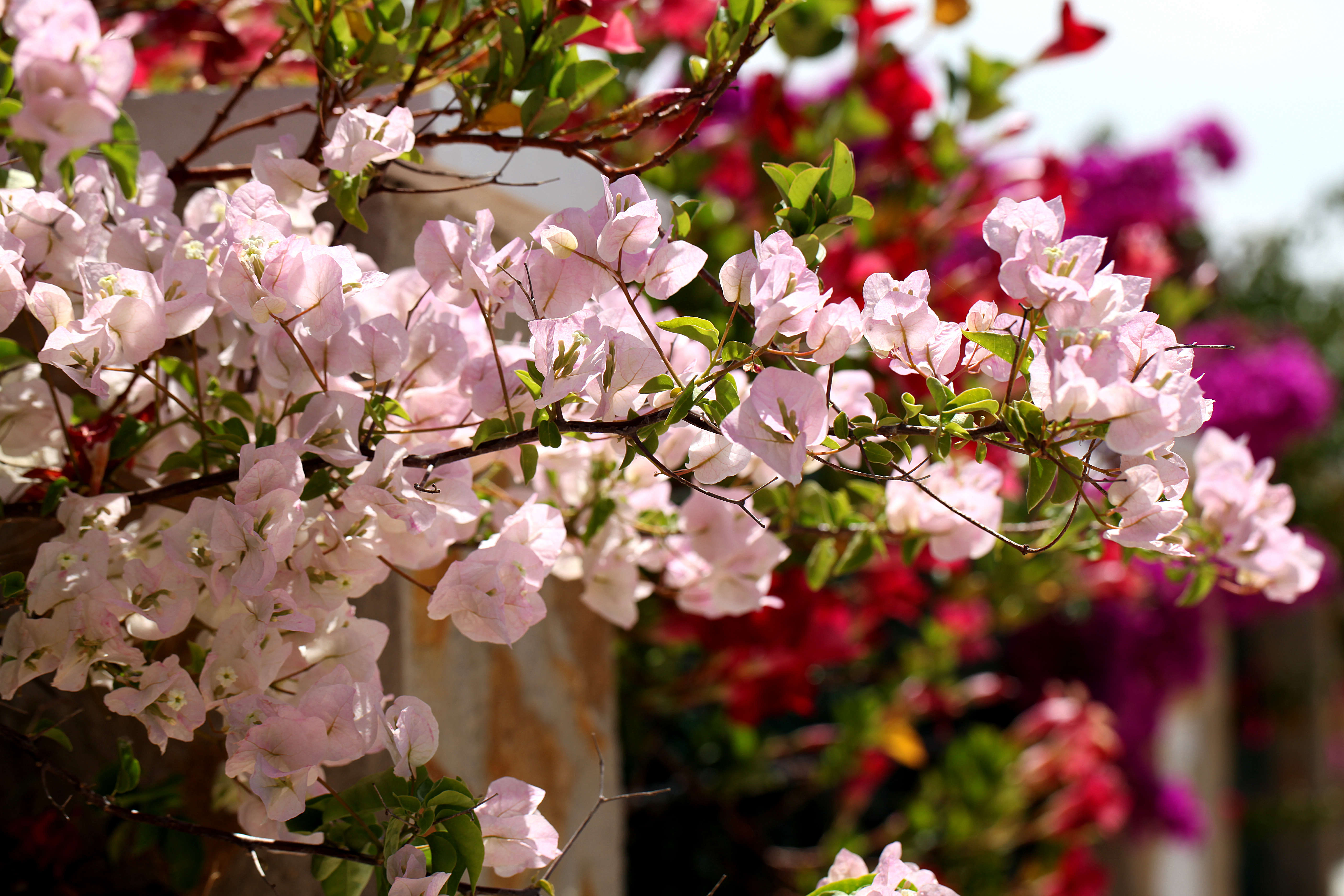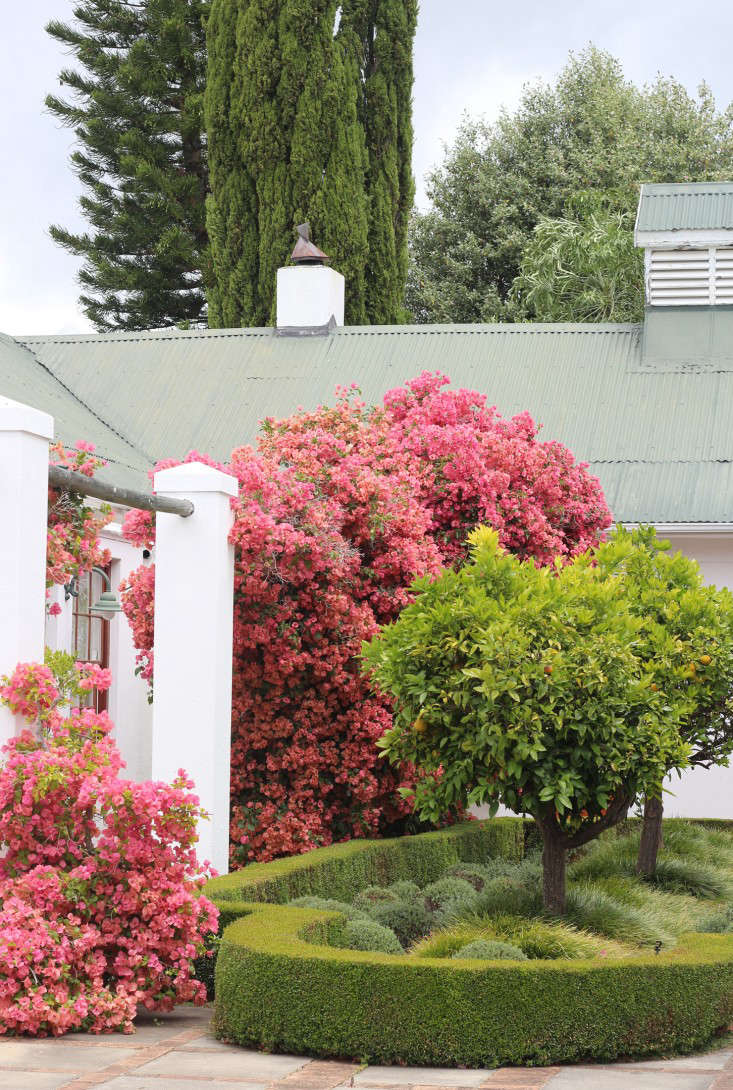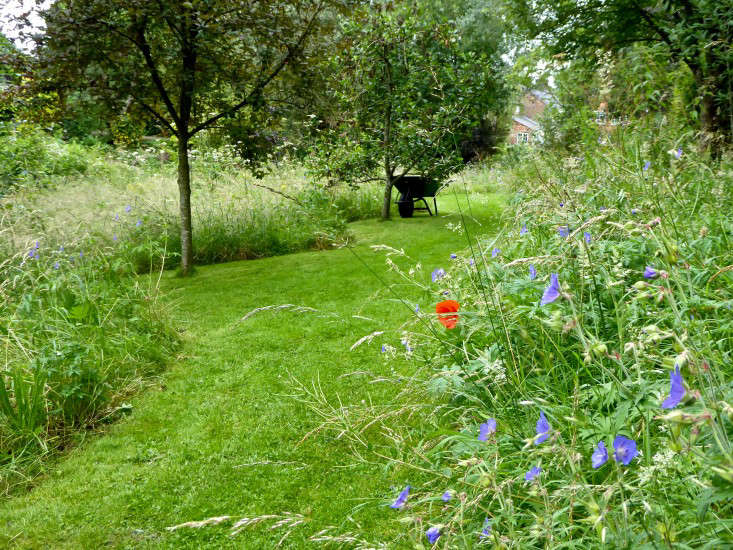Bougainvillea, Bougainvillea glabra: “Paper Flower”
Like a beautiful girl who shows up at a party wearing too much makeup and a loud, revealing dress, bougainvillea is bound to be the center of attention in any garden. Whether you plant this gorgeous climber amid a tropical landscape or try to confine it to a pot on a patio, bougainvillea will outshine even the showiest of other plants. Dinner-plate dahlias, grandiflora roses, even double peonies in lavish bloom will have trouble attracting notice if their neighbor is a bougainvillea.
Above: Photograph by Marla Aufmuth for Gardenista. For more, see Survivor: A Grand Seaside Garden in Tiburon.
Bougainvillea glabra (or its similar relation Bougainvillea spectabilis) is an enthusiastic evergreen vine that is seen growing with wild abandon in warm climates. It can reach spectacular heights and when in bloom can cover and transform the most hideous eyesore of a fence or outbuilding into a bower worthy of Titania, Shakespeare’s fairy queen.
Above: Photograph by Lumbar via Wikimedia.
The cause of the fuss is actually not the true flower (which consists of quite modest little white tubes). The three bracts or modified leaves which surround the flowers are the showstoppers. Delicately thin and brilliantly hued, the bracts convert the vine into a dense mass of saturated color: scarlet, fuchsia, purple, or orange, among others.
Cheat Sheet
- Bougainvillea is a vigorous grower; frequent pruning may be necessary to shape the plant or keep it within bounds.
- Beauty often comes with a price and in this case under each fabulous bloom is a 1- to 2-inch thorn so it is wise to handle this plant with care and to avoid placing it in a high traffic area where people would be likely to brush against it.
- Bougainvillea can grow horizontally as well as upwards and can be trimmed and grown as a formal hedge or allowed to spread over the earth as a quick fix ground cover.
Above: Photograph by Keith Williamson via Flickr.
Keep It Alive
- Bougainvillea is hardy in zones 9 to 11 and likes a very bright, sunny location with soil that drains freely.
- Once established these plants are drought tolerant and, in fact, flower best if they are kept slightly dry.
- It is best to avoid transplanting Bougainvilleas as they don’t like their roots disturbed and will actually bloom more lavishly if they are kept at least somewhat root bound.
Above: Bougainvillea in bloom at the Cellars-Hohenort Hotel, in the winemaking suburb of Constantia, Cape Town. Photograph by Marie Viljoen. For more, see Under the Radar: A 5-Star Garden in Cape Town.
Unlike other aggressive vines such as wisteria or autumn clematis, bougainvillea does not attach itself to trellises or other supports with tendrils, although its thorns help to the plant cling to surfaces. To train it to climb something you will have to encourage it by tying it gently with a length of some soft material. (Actually old nylon stockings work very well for this purpose.)
Above: Photograph by Eleni Psyllaki. For more, see 10 Garden Ideas to Steal from Greece.
Because bougainvillea takes well to pruning, it can be grown as a small tree or a standard.
Above: Photograph by Dinesh Valke via Flickr.
Gardeners without the space for a fast-growing vine will be glad to know that bougainvillea plants make excellent bonsai specimens. It has even been seen used as topiary, clipped into swans or baskets by individualist gardeners who are clearly not afraid to defy tradition and trade the sedate green of boxwood for the radiant colors and flair of the tropics.
See more of our Plant Guides for our favorite vines and climbers, including Wild Grape Vine, Jasmine, and Ivy.
Finally, get more ideas on how to successfully plant, grow, and care for bougainvillea with our Bougainvillea: A Field Guide.
Interested in other tropical plants for your garden or indoor space? Get more ideas on how to plant, grow, and care for various tropical plants with our Tropical Plants: A Field Guide.
Finally, get more ideas on how to plant, grow, and care for various vines and climbers with our Vines & Climbers: A Field Guide.


















Have a Question or Comment About This Post?
Join the conversation (1)